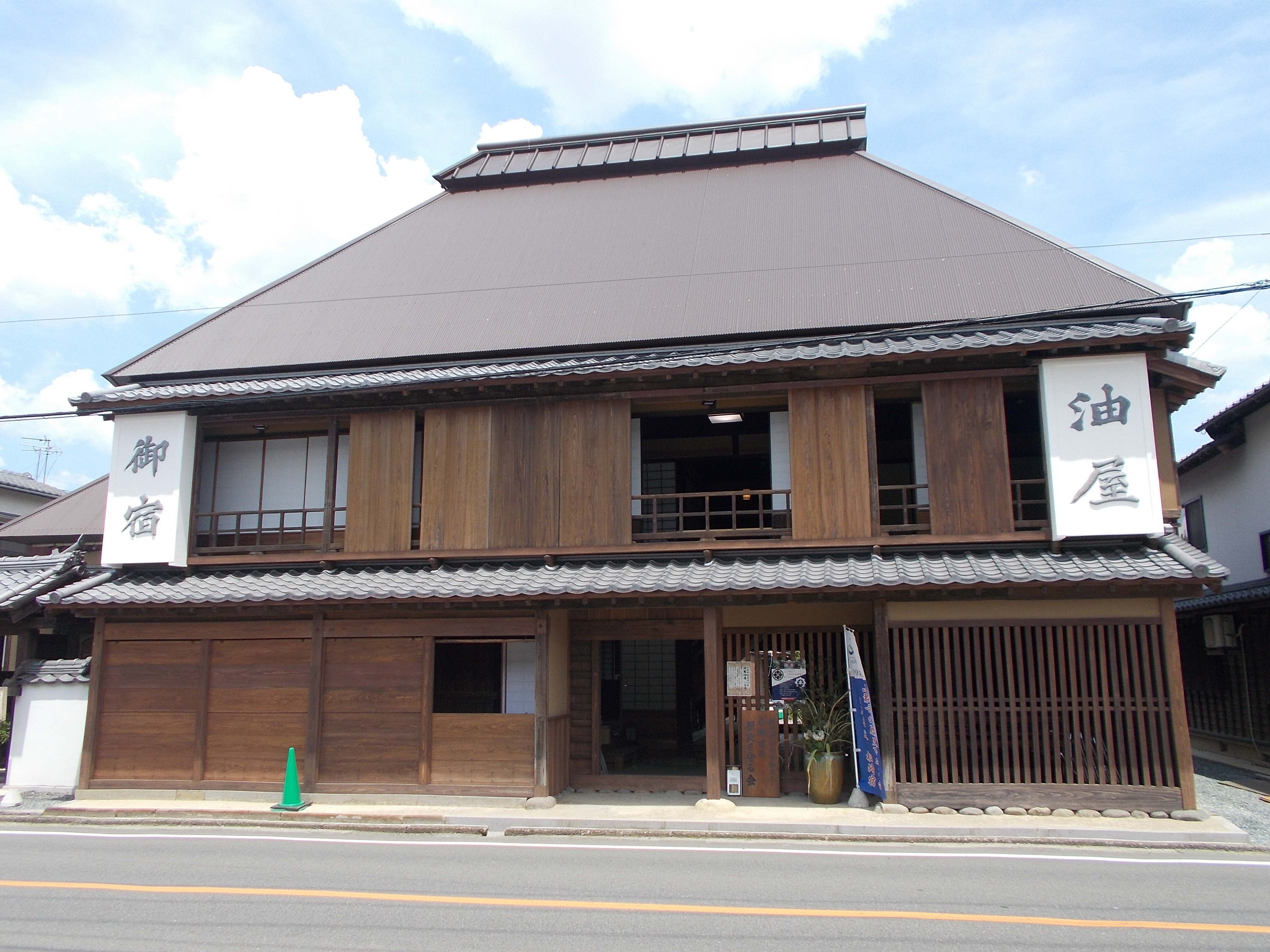Hatago on:
[Wikipedia]
[Google]
[Amazon]
 were
were
 Because many post stations along the Tōkaidō,
Because many post stations along the Tōkaidō,
Aichi Prefectural Education Center. Accessed November 6, 2007. *Nakasendō **
. Yasunao Hayashi. Accessed November 6, 2007. **
Accessed November 6, 2007. **
 were
were Edo period
The or is the period between 1603 and 1867 in the history of Japan, when Japan was under the rule of the Tokugawa shogunate and the country's 300 regional '' daimyo''. Emerging from the chaos of the Sengoku period, the Edo period was characteriz ...
lodgings for travelers at '' shukuba'' (post stations) along the national highways, including the Edo Five Routes
The , sometimes translated as "Five Highways", were the five centrally administered routes, or ''kaidō'', that connected the ''de facto'' capital of Japan at Edo (now Tokyo) with the outer provinces during the Edo period (1603–1868). The most ...
and the subroutes. In addition to a place to rest, ''hatago'' also offered meals and other foods to the travelers. They were also called .
Name origin
''Hatago'' means "traveling basket." The word itself originally derived from baskets that contained food for horses and were carried by travelers. From there, it became a tool with which travelers were carry their own food and goods. Shops that began preparing and selling food for travelers gained the suffix , meaning "shop," but this was eventually shortened to just ''hatago''.Preserved ''hatago''
 Because many post stations along the Tōkaidō,
Because many post stations along the Tōkaidō, Nakasendō
The , also called the ,Richard Lane, ''Images from the Floating World'' (1978) Chartwell, Secaucus ; pg. 285 was one of the five routes of the Edo period, and one of the two that connected Edo (modern-day Tokyo) to Kyoto in Japan. There were 6 ...
and other historical routes have been either preserved or rebuilt, there are many traditional ''hatago'' still in existence today. While some have only been preserved as public buildings and museums, others have continued to operate for the past few hundred years.Lodgings
*Tōkaidō ** Akasaka-juku's ''Ōhashi-ya''Ōhashi-yaAichi Prefectural Education Center. Accessed November 6, 2007. *Nakasendō **
Ashida-shuku was the twenty-sixth of the sixty-nine stations of the Nakasendō. It is located in the present-day town of Tateshina, in the Kitasaku District of Nagano Prefecture, Japan.
History
Ashida-shuku was formed in 1601, during the Edo period, when the ...
's ''Tsuchi-ya''
**Narai-juku
was the thirty-fourth of the sixty-nine stations of the Nakasendō, as well as the second of eleven stations along the Kisoji.Nara ...
's ''Echigo-ya''Nagano-ken no Kaidō to Shukuba. Yasunao Hayashi. Accessed November 6, 2007. **
Yabuhara-juku was the thirty-fifth of the sixty-nine stations of the Nakasendō, as well as the third of eleven stations on the Kisoji. It is located in the present-day village of Kiso, in the Kiso District of Nagano Prefecture, Japan. Yabuhara-juku is located ...
's ''Kome-ya''Nagano no Onsen-shukuAccessed November 6, 2007. **
Tsumago-juku
was the forty-second of the sixty-nine post towns on the Nakasendō. It is located in Nagiso, Kiso District, Nagano Prefecture, Japan. It has been restored to its appearance as an Edo-era post town and is now a popular tourist destination.
Hi ...
's ''Matsuyo-ya''
**Hosokute-juku
was the forty-eighth of the sixty-nine stations of the Nakasendō connecting Edo with Kyoto in Edo period Japan. It is located in former Mino Province in what is now part of the city of Mizunami, Gifu Prefecture, Japan.Tarui-juku
260px, modern Tarui-juku
was the fifty-seventh of the sixty-nine stations of the Nakasendō connecting Edo with Kyoto in Edo period Japan. It is located in former Mino Province in what is now part of the town of Tarui, Fuwa District, Gifu Pref ...
's ''Kamemaru-ya''
Museums
*Tōkaidō **Okabe-juku
was the twenty-first of the fifty-three stations of the Tōkaidō. It is located in what is now the city of Fujieda, Shizuoka Prefecture, Japan. Between Okabe-juku and the preceding post station of Mariko-juku runs Route 1, which was part ...
's ''Kashiba-ya''
**Nissaka-shuku
was the twenty-fifth of the fifty-three stations of the Tōkaidō. It is located in what is now part of the city of Kakegawa, Shizuoka Prefecture, Japan.
History
Nissaka-shuku was located at the western entrance to , regarded as one of the thr ...
's ''Kawasaka-ya'' and ''Yorozu-ya''
**Arai-juku
was the thirty-first of the fifty-three stations of the Tōkaidō. It is located in the city of Kosai, Shizuoka Prefecture, Japan. During the Edo period, it was located in Tōtōmi Province. The ''kanji'' for the post station were originally ...
's ''Kinokuni-ya''
**Futagawa-juku
was the thirty-third of the fifty-three stations of the Tōkaidō. It is located in what is now the city of Toyohashi, Aichi Prefecture, Japan. It was the easternmost post station in Mikawa Province.
History
Futagawa-juku was established in ...
's ''Seimei-ya''
** Seki-juku's ''Tama-ya''
See also
* ''Toiyaba
, called ''toiya'' outside of Edo, were trade brokers in Japan, primarily wholesalers, warehouse managers, and shipment managers; the term applies equally to the traders themselves and to their shops or warehouses. First appearing as early as t ...
''
* ''Honjin
The ''honjin'' at Inaba Kaidō's Ōhara-shuku.">Ōhara-shuku.html" ;"title="Inaba Kaidō's Ōhara-shuku">Inaba Kaidō's Ōhara-shuku.
is the Japanese word for an inn for government officials, generally located in post stations (''shukuba'') dur ...
''
* '' Chaya''
References
{{Reflist Road transport in Japan Edo period Japanese historical terms